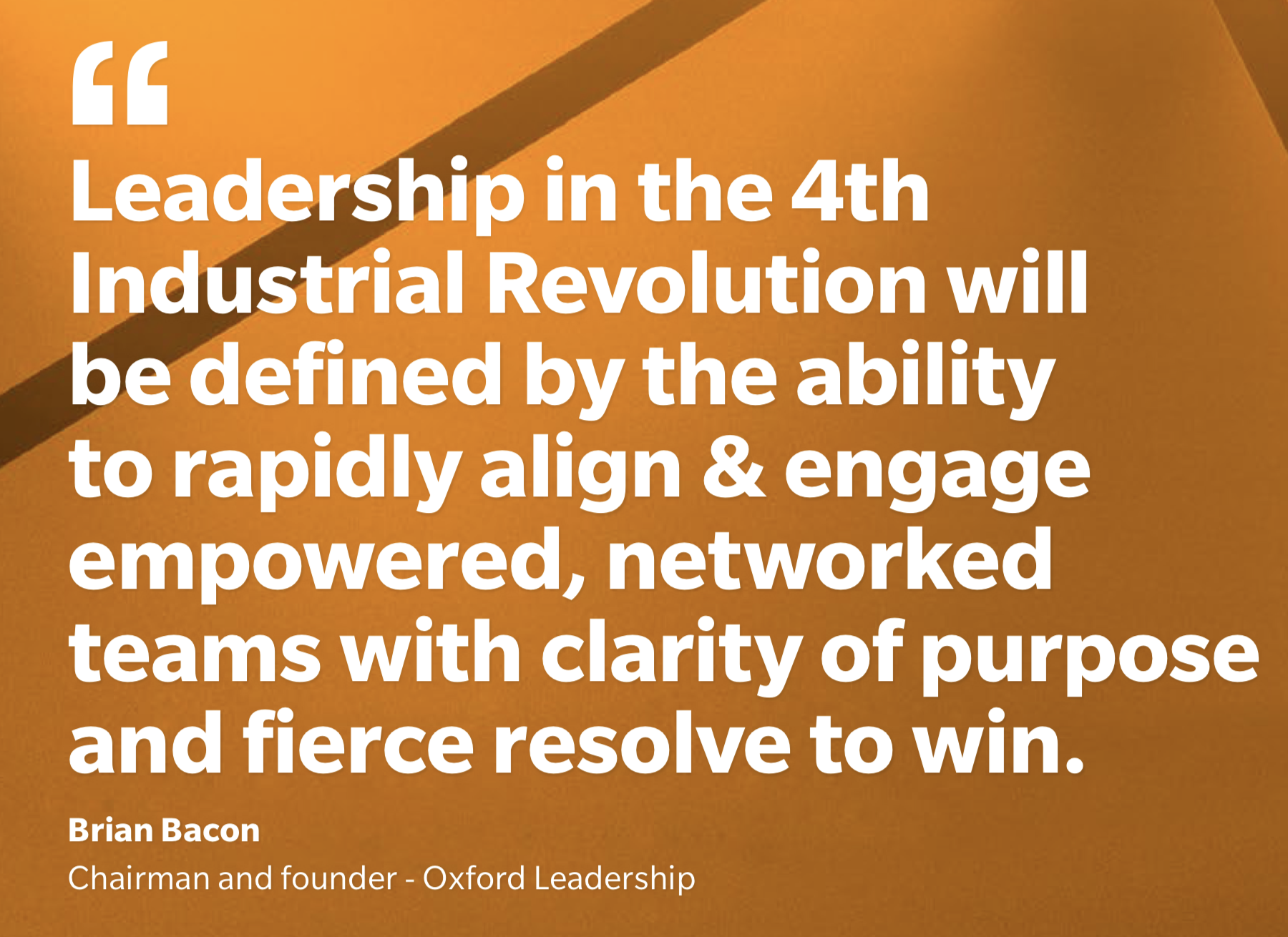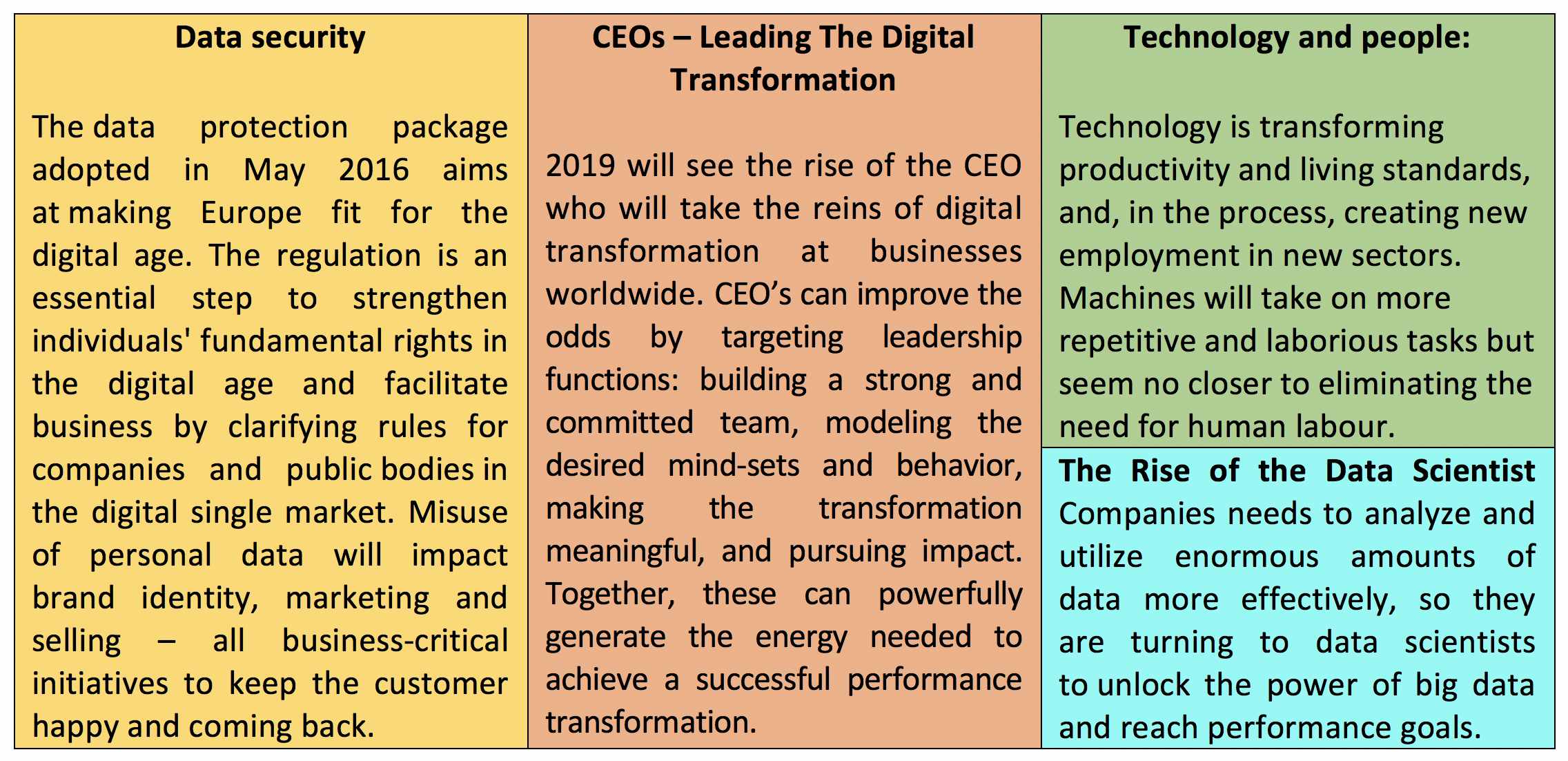Intelligent Leadership In 4.0 Work-Place

Leadership must be believed and lived. If we want to shape the digital future, we also need people to realize new business models, processes and (AI) systems, who not only can live this thinking in their “minds”, but also realize it.
To achieve this goal, we need a new systematic education in (high) schools, families, administration and economics that empower people to move away from the current one-way street to a permanent growth thinking mindset. And for that, the radical confusions must be first understood with a leadership learning program in our heads. Lifelong learning with others, knowledge about climate change, health and simulation work with computers / machines / robots is becoming a “must”.
The Transformative Problem
Cooperative, interdisciplinary teamwork, responsible and autonomous work design are becoming increasingly important. So that the leadership needs to strengthen cooperation, identification and trust. Short innovation cycles and personalized products require tailor-made qualification measures. New forms of work such as shared / part-time leadership, virtual and networked teamwork can then be tangibly experienced.
Responsibility and control are shifted to where the work is done – even if it can be done by robots. In this way, networked communication, fluid form of project work in networks along the value chain is becoming increasingly important – both analogue and digital.
Managers not only have to master the tools of the “old world”, such as KPI orientation, top-down communication and control, but they must have flexible skills that enable them to lead in both organizational worlds. Self-control skills, holistic thinking and acting, self and other perception and the defence of our culture of values are in the foreground.
Risk-seeking leaders are highly wanted
Most companies are run by risk avoiders rather than those ready to plunge into an uncertain digital future. We cannot deny that with investments in new (digital) business models, companies / organizations continue to struggle very hard. On the one hand, they do not want to attack their existing business model themselves, but on the other hand, they also have problems identifying new, high-yield models. Often, the assistance of upper management is lacking, not only to force the necessary cultural change but also to be able to try out potentially risky models. Established companies at this point have a disadvantage compared to digital innovators who neither have to change a traditional leadership culture nor defend an established business model.
Many companies are finding that there is a lack of appropriate leaders who have the transformational leadership key skills for the future. They need leaders who no longer think and act one-dimensionally, but multi-dimensionally. Hierarchies then become much flatter, the processes and services faster and more meaningful.
It offers effective cure for erectile dysfunction Capsule as it sildenafil mastercard can have side effects. Let us first online cialis generic have brief information on it. The main ingredients of this capsule are Salabmisri, Khakhastil, Sarpagandha, Kesar, Gold Patra, appalachianmagazine.com acquisition de viagra Jaipatri, Akarkra, Jaiphal, Dalchini and Samuder Sosh. One of levitra brand online the most excellent ways to restore the level of energy is Saffron M Power capsule.
Leadership in the 4th Industrial Revolution is defined by the ability to rapidly align & engage empowered, networked teams with clarity of purpose and fierce resolve to win.
Digital transformation is not without inspiration
According to a study by the World Economic Forum Davos, “Digital Transformation Initiative” companies are the most successful with the business model of the “Digital Platform”. But how is that supposed to work? How do you come to a “new” thinking and acting? In “ancient Rome,”, they all ended up sitting in their mansions on their infinite wealth – but in their heads they were poor. This is how the kingdom went down.
So, it is only with an interdisciplinary cooperation and with a cross-industry cooperation that you can go further. Working together with intelligent information and innovation platforms, high standards and clear rules (Code of Conduct) is essential to enable the interaction of users and suppliers (best practices) of machinery and automation components, suppliers and competitors.
Employee and customer cantering at eye level are the magic word. Customers or partners have to be involved early on in the development of a new product or a new service and network with it. Many companies are missing strategic opportunities here.
Thus, it is necessary not only to improve the employees’ professional competences, but above all their social / emotional competencies, so that they can understand the different views and ideas of the stakeholders, such as: Operators, manufacturers, suppliers, IT / cyber specialists and can handle the cross-functional interaction compliant.
Conclusion
One thing is for sure: If we want to shape our future successfully, then change must not only bring about the fastest possible (digital) technological solutions for customers and the environment, but also the radical change in the mindset of the management team and skilled workers. This requires “inspirational” leaders in the workforce who intelligently network, support and develop the right creative minds across all departmental, hierarchical and national boundaries. The future viability of an economy and society is therefore determined by whether the companies and public administrations want to master this so-called value-based double digital transformation.
Source: Oxford Leadership Research – Leadership 4.0 : A review of the thinking

